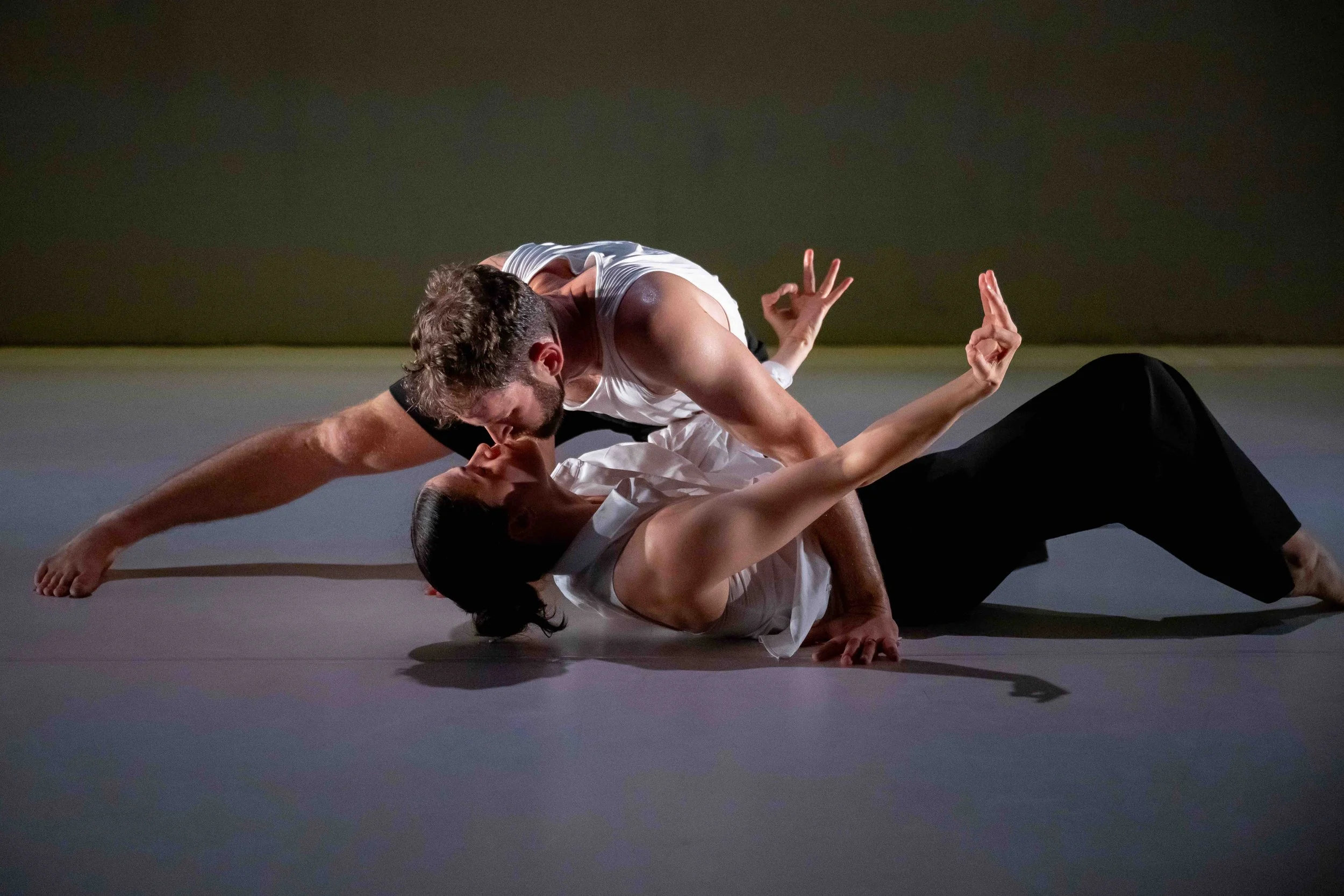Joe Laughlin molds new inspiration out of clay, glass, and more in DANCE:CRAFT
Joe Ink choreographer collaborated with five artisans in a project five years in the making
Dancers Heather Dotto and Joey Matt and a ceramic creation by Debra E Sloan in DANCE:CRAFT. Photo by Michael Slobodian
Joe Ink in partnership with SFU Woodward’s Cultural Programs presents Joe Ink’s DANCE:CRAFT from May 20 to 22 at the Fei and Milton Wong Experimental Theatre in the Goldcorp Centre for the Arts
ALMOST FIVE YEARS ago, as part of the creation process for their new DANCE:CRAFT, Joe Laughlin and dancer Heather Dotto got hands-on with the craft-making process. They pulled hot glass and made a paperweight with Hope Forstenzerand, and poured slip molds to create ceramic figures with Debra E Sloan.
“We came out of it just vibrating,” says Laughlin, the longtime Vancouver choreographer behind the company Joe Ink. “We were really excited by it. It really reminded me of the creative process and how you feel in it–a childlike discovery. We all played with clay as kids and it reignited that in us. It also helped us understand how they [the craft artists] work.”
The result of all of Laughlin’s research is coming to fruition with the world premiere of DANCE:CRAFT—a collaboration with five local craft artists that was supposed to have premiered as a dance-art installation right before pandemic shutdowns. Now Joe Ink is finally bringing the reimagined show to the stage, in a production that integrates movement by dancers Dotto and Joey Matt with ceramic, glass, metal, fibre, and wood pieces specially commissioned for the production.
“I haven't done anything for two years, and I want to be able to realize the work we invested so much in and keep people working,” says Laughlin.
Interacting with objects is nothing new for Laughlin: in his striking productions over more than three decades, his dancers have wielded everything from teacups to cigars. But there was something about the materials here that inspired Laughlin in new ways, working directly with artists Forstenzer (glass), Stefanie Dueck (metal), Patrick Christie (wood), Deborah Dumka (fibre), and Sloan (ceramics) to create objects to inspire his choreography. (The original process was facilitated and curated by the Craft Council of British Columbia.)
“I’ll be talking a lot about earth, the environment, the elements: those are all connected to craft and the origins of craft,” he hints. “As the dancers get more familiar with the objects, they embody them and they use them to extend the language of the body.”
Amid the showpieces in DANCE:CRAFT are a gnarled ceramic tree and eerie white ceramic masks; 100 six-inch-square wooden blocks; and a big, central metallic structure.
Photo by Michael Slobodian
“I also wanted the craft artists to push themselves and see what they could do—to experiment and to take this dance knowledge and go,” Laughlin says. Amid the process, he invited the craft artists into a dance workshop. And he says he was inspired by the subtle choreography of their own movements shaping clay or blowing glass: “I see dance in everything,” says Laughlin with a laugh.
Helping to bring the vision to life are video projections by Eric Chad, and music by Jesse and Josh Zubot.
As an added bonus, before and after the show, audience members will be able to check out five virtual-reality films that will take them right into the ateliers of the artists, adding a further layer to a production that is already an ambitious, multifaceted experience.
“I wanted to make a beautiful, emotional show that visually would be really strong and would really highlight the objects—but also the dancers’ bodies,” explains an audibly inspired Laughlin. “I think that was my challenge: it is a dance show and I’m a dancer, but we have all these objects and they need to be represented well. They influence the movement and there is a back and forth between them.
“I feel like I have the greatest team and that it all just came together, in a way,” reflects Laughlin of the extended five-year process that was forced into pandemic pause for a while. “I think it's a lesson to me that sometimes you need to acquiesce control and be open to changing, modifying, and adapting.” A little like pulling glass or molding clay.














